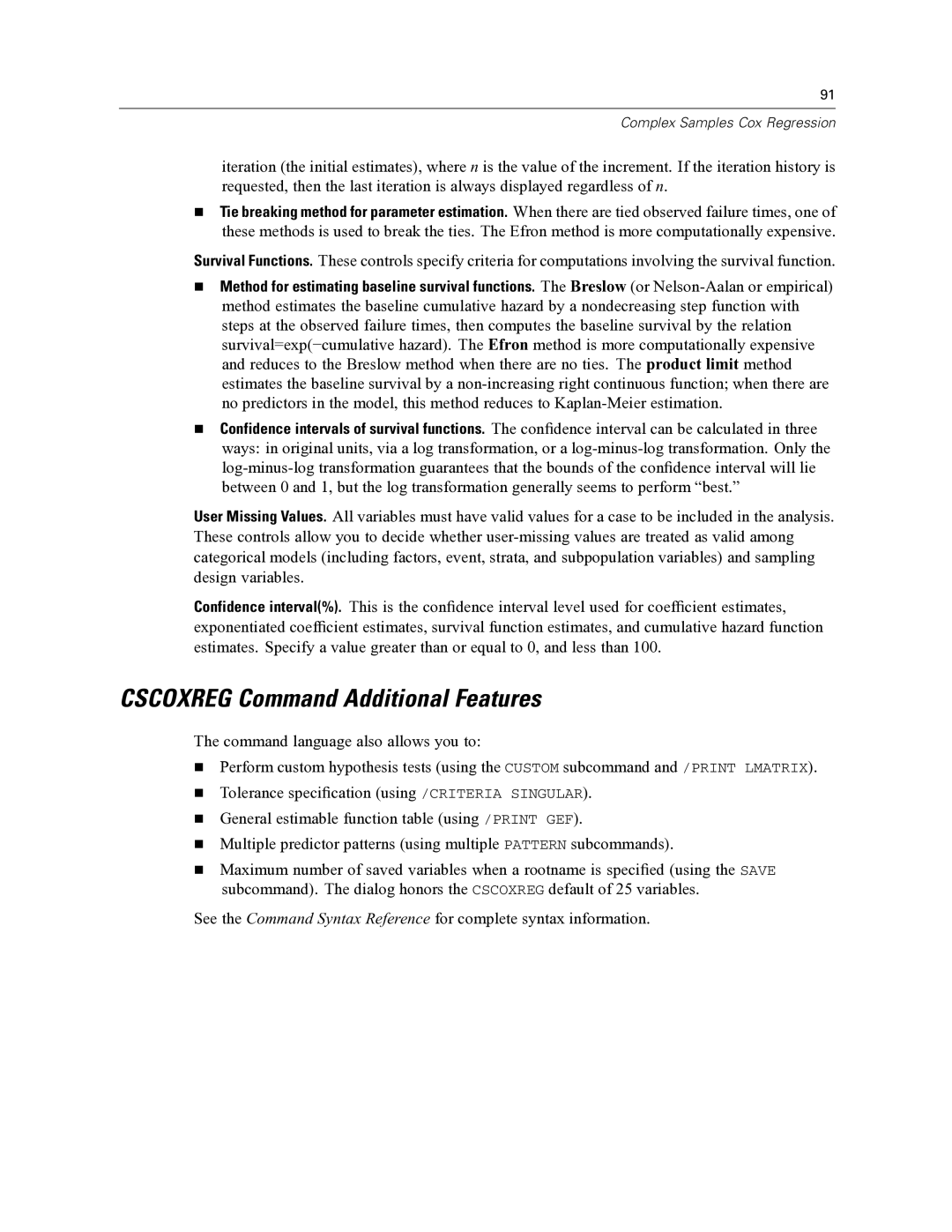91
Complex Samples Cox Regression
iteration (the initial estimates), where n is the value of the increment. If the iteration history is requested, then the last iteration is always displayed regardless of n.
Tie breaking method for parameter estimation. When there are tied observed failure times, one of these methods is used to break the ties. The Efron method is more computationally expensive.
Survival Functions. These controls specify criteria for computations involving the survival function.
Method for estimating baseline survival functions. The Breslow (or
Confidence intervals of survival functions. The confidence interval can be calculated in three ways: in original units, via a log transformation, or a
User Missing Values. All variables must have valid values for a case to be included in the analysis. These controls allow you to decide whether
Confidence interval(%). This is the confidence interval level used for coefficient estimates, exponentiated coefficient estimates, survival function estimates, and cumulative hazard function estimates. Specify a value greater than or equal to 0, and less than 100.
CSCOXREG Command Additional Features
The command language also allows you to:
Perform custom hypothesis tests (using the CUSTOM subcommand and /PRINT LMATRIX).
Tolerance specification (using /CRITERIA SINGULAR).
General estimable function table (using /PRINT GEF).
Multiple predictor patterns (using multiple PATTERN subcommands).
Maximum number of saved variables when a rootname is specified (using the SAVE subcommand). The dialog honors the CSCOXREG default of 25 variables.
See the Command Syntax Reference for complete syntax information.
